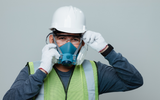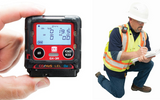August 12-18 is OSHA’s Safe + Sound Week 2024
Every August, the Occupational Safety and Health Administration (OSHA) spearheads Safe + Sound Week, a nationwide initiative promoting workplace safety and health programs across all industries. Last year, over 3,900 organizations participated in the week-long event to celebrate the successes of workplace health and safety programs, sharing information and ideas for keeping America’s workers safe (OSHA, n.d.).
This year, Safe + Sound Week runs from August 12-18. Register today and get resources to kickstart your workplace safety program or energize an existing one.
Why Participate in Safe + Sound Week 2024?
Since the Occupational Safety and Health (OSH) Act was passed in December 1970, the rate of US worker deaths and reported injuries has decreased by more than 60%. However, millions of workers continue to suffer serious job-related injuries or illnesses each year. According to the National Safety Council, the total cost of work injuries in 2022 was $167 billion. This includes wage and productivity losses, medical and administrative expenses, and employers’ uninsured costs (NSC, n.d.).
To help organizations develop better safety protocols, Safe + Sound Week 2024 will provide resources for businesses on Job Hazard Analysis. In addition to helping prevent workplace injuries and minimizing related costs, working towards safer workplaces creates a culture where everyone feels valued.
Make Safe + Sound a Year-Round Commitment
While participating in Safe + Sound Week 2024 is a great way to jumpstart your safety program, PK Safety believes workplace safety is an ongoing process. Here are some essential tips to improve occupational safety and manage workplace hazards before they can cause injury:
- Identify the Risks: Workplace safety starts with surveying the hazards that can cause injury and illness. This includes slip and fall risks, worker ergonomics, and atmospheric hazards. Train your workers to spot these hazards in their respective work environments so they can promptly report them to their supervisors.
- Address the Hazards: Following the risk assessment, develop ways to eliminate or reduce workplace hazards by strengthening safety controls. These could involve changing how tasks are performed, using alternative equipment or materials, moving the work to a safer location, or working during different times of the day.
- Enhance Protective Equipment: Provide your personnel with high-quality protective equipment for unavoidable hazards. The gear should be designed to protect against specific occupational hazards. They must also perfectly fit the worker, allowing them to move freely and effectively while performing their tasks. Meanwhile, versatile solutions, like a multi-gas monitor, may be required for more dynamic industrial environments where various processes and materials can introduce atmospheric hazards.
The entire team should be trained on properly using and maintaining all worker safety equipment. This helps ensure that all protective gear and devices are in optimal condition before going in the field. Finally, document your safety programs. A written safety program provides a clear roadmap for employees, guides training, and helps improve controls.
To learn more about the core elements of a workplace safety and health program, click here.
References:
- Occupational Safety and Health Administration (n.d.). Safe + Sound Week. Retrieved from https://www.osha.gov/safeandsoundweek/
- National Safety Council (n.d.). Work Injury Costs. Retrieved from Work Injury Costs - Injury Facts (nsc.org)
Recent Posts
-
Understanding Respirator Replacement Filters
According to the Occupational Health and Safety Administration (OSHA), millions of workers are re …Aug 2nd 2024 -
Explore the RKI GX-3R: The Smallest 4-Gas Monitor | PK Safety
Four-gas monitors have become critical components of workplace safety for industries where exposu …Aug 1st 2024 -
August 12-18 is OSHA’s Safe + Sound Week 2024
Every August, the Occupational Safety and Health Administration (OSHA) spearheads Safe + Sound We …Aug 1st 2024





